Elkonin Boxes are a wonderful tool to use to help children think about the sounds they hear in phonetically regular words. Boxes were brought to the United States in the mid 1980’s when Marie Clay, and the people she trained to do Reading Recovery®, began to use the boxes as a part of writing during their lessons with children.
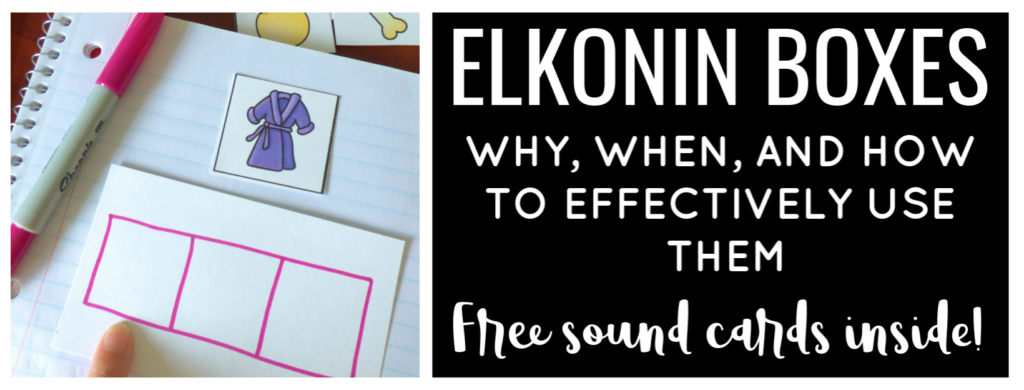 Classroom teachers saw the value of the tool and wanted to use them in their classroom writing as well.
Classroom teachers saw the value of the tool and wanted to use them in their classroom writing as well.
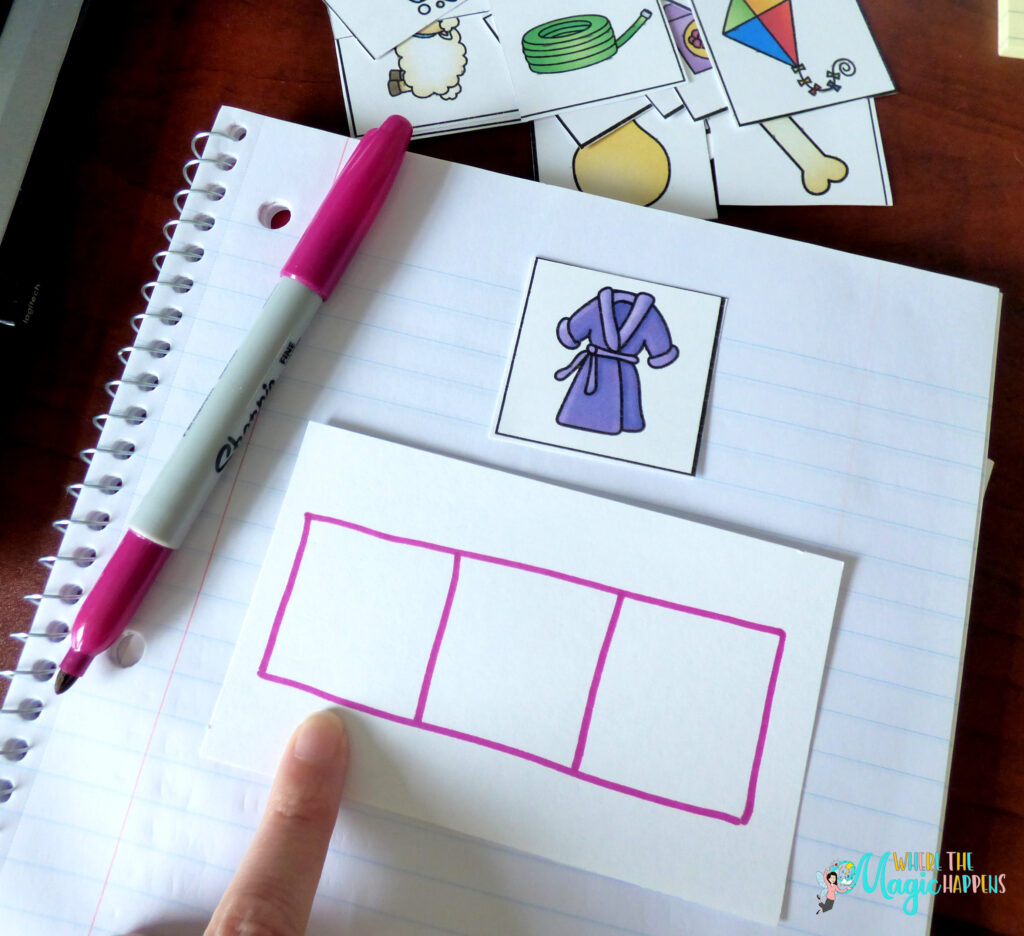
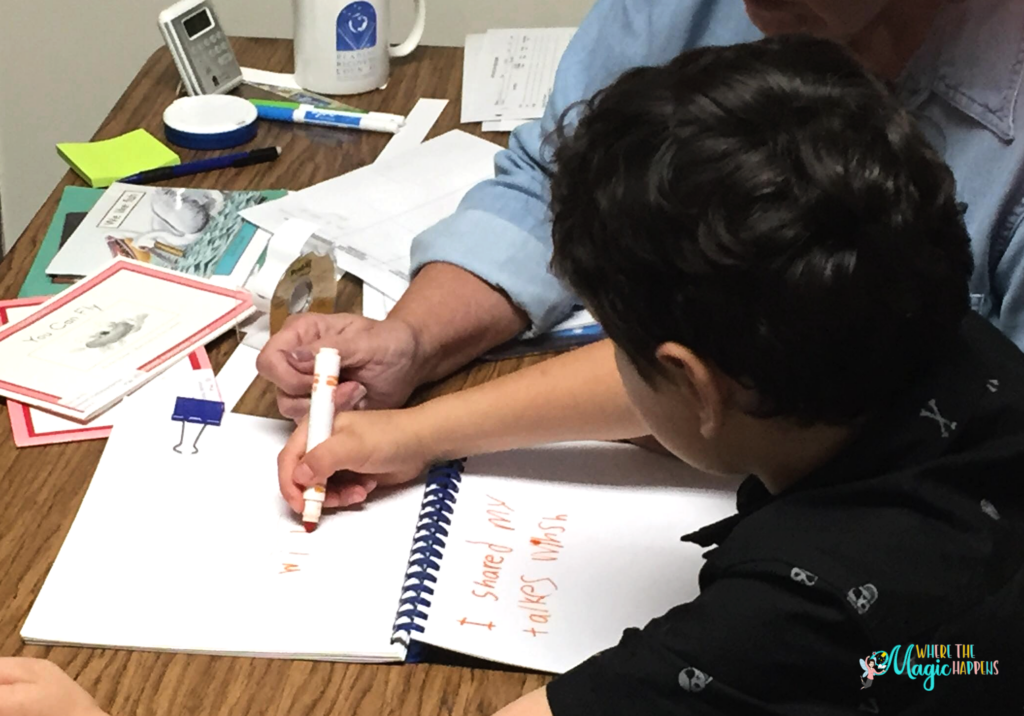 2. Once the children can do this slow articulation, you move to using some cards with boxes drawn on them (A document camera works well for this, but you can also have the boxes pre-drawn on chart paper that is attached to a magnetic board. Your tokens will need metal rims so they will stick to the magnetic board).
2. Once the children can do this slow articulation, you move to using some cards with boxes drawn on them (A document camera works well for this, but you can also have the boxes pre-drawn on chart paper that is attached to a magnetic board. Your tokens will need metal rims so they will stick to the magnetic board).
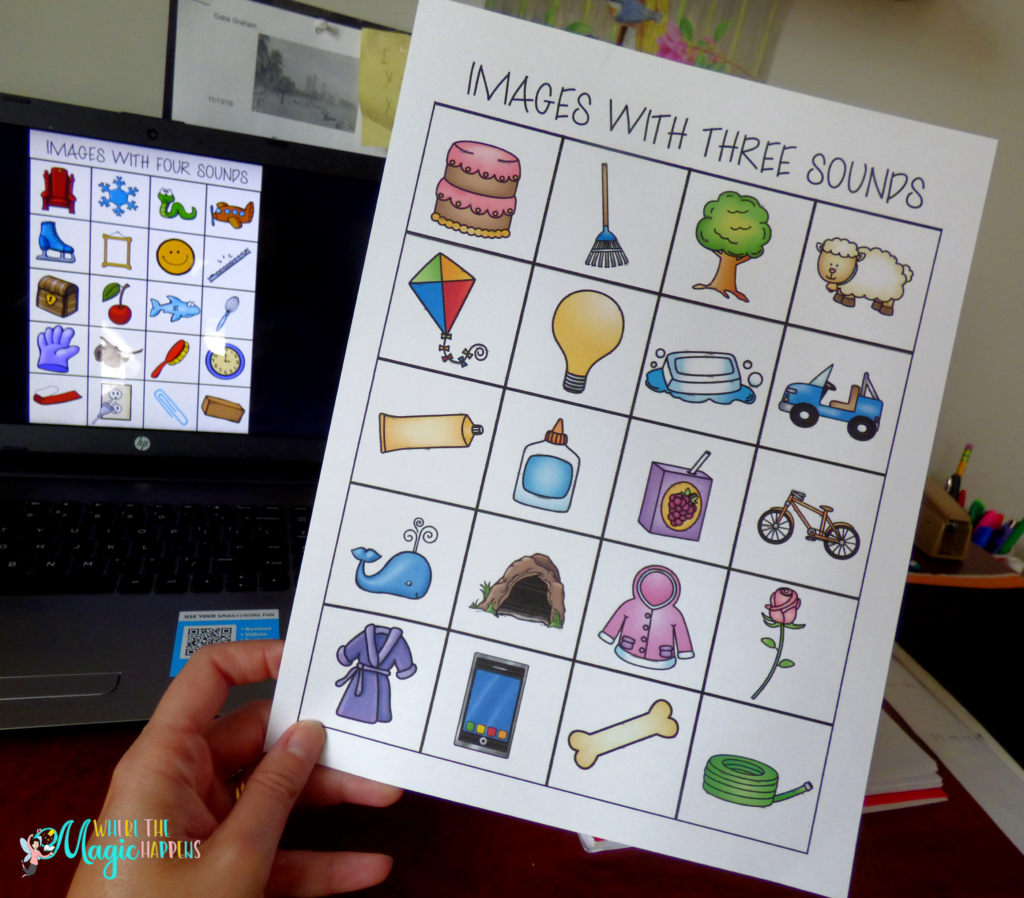
 The purpose of this is for the children to learn to slowly articulate words they want to write so they can hear the sounds and produce the letters they associate with the sounds. It is a temporary scaffold to help with the development of sound to letter association. Once the children get the idea of what to do you just say to them, “Say the word slowly and write what you hear” without the support of the boxes.
The purpose of this is for the children to learn to slowly articulate words they want to write so they can hear the sounds and produce the letters they associate with the sounds. It is a temporary scaffold to help with the development of sound to letter association. Once the children get the idea of what to do you just say to them, “Say the word slowly and write what you hear” without the support of the boxes.
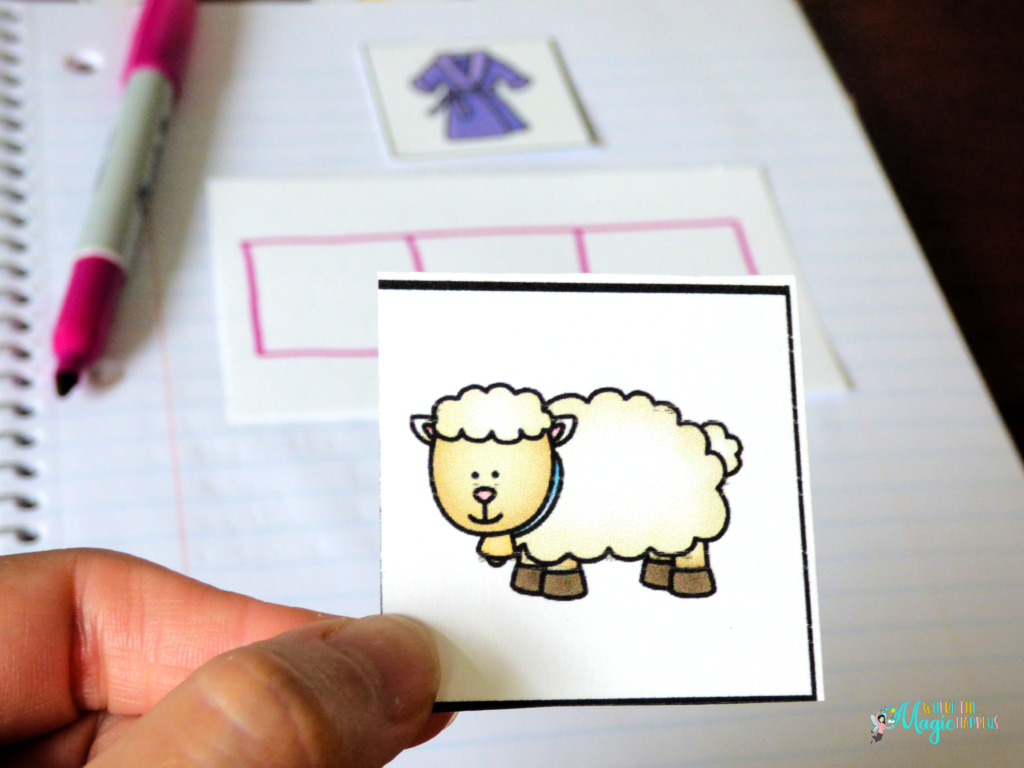 They can try it on a scrap of paper. You say, “Does it look right?” and they can decide if changes are needed.
For most children, this is a technique to use through mid to late first grade and they will adapt it for their own purposes. Many of these words will become a part of their known words for writing and won’t need attention.
They can try it on a scrap of paper. You say, “Does it look right?” and they can decide if changes are needed.
For most children, this is a technique to use through mid to late first grade and they will adapt it for their own purposes. Many of these words will become a part of their known words for writing and won’t need attention.

This post may contain affiliate links for your convenience
WHY ARE ELKONIN BOXES IMPORTANT?
The Elkonin sound boxes provide a visual framework to support hearing of sounds in words. Like any other tool, children need to be taught how to use this temporary framework to think about and record the sounds they hear to write a word that has easy to hear sounds. Boxes are typically used to hear and record the sounds in words with no more than four sounds.
HOW TO USE ELKONIN BOXES
I like to teach the process of using Elkonin Boxes as a part of interactive writing. For the purpose of this example let’s say we are writing something about animals. I would have some pictures prepared that fit with the topic: cat, fish, lion, shark. To teach the task:- Begin by showing the children the pictures one at a time a practicing how to say the word slowly, the key word here is slowly. You do NOT want the children to segment the sounds, the word should sound like you really say it but just stretched out a bit to hear the sounds clearly.
 2. Once the children can do this slow articulation, you move to using some cards with boxes drawn on them (A document camera works well for this, but you can also have the boxes pre-drawn on chart paper that is attached to a magnetic board. Your tokens will need metal rims so they will stick to the magnetic board).
2. Once the children can do this slow articulation, you move to using some cards with boxes drawn on them (A document camera works well for this, but you can also have the boxes pre-drawn on chart paper that is attached to a magnetic board. Your tokens will need metal rims so they will stick to the magnetic board).
There is great value in drawing the Elkonin boxes in front of the reader!
As the children say the word slowly, you push a token into the boxes (one token per box) so the movement of the token matches the slow articulation of the word. The number of boxes you have should match the number of sounds in the word, so for cat and fish I would have 3 boxes, and for lion and shark I would have 4 boxes. 3. As we are doing this together, I would ask the children for sounds they hear as we are pushing the tokens and saying the words. Accept sounds in any order and write the letter that makes the sound in the correct box. Over time you will come to ask for the sounds in order but in the beginning, you need to accept what they offer. 4. When you are ready to write together and the children have composed what they want to say about animals, you need to be thinking about examples of words they use that are phonetically regular. This way, you could model and practice using sound boxes during this shared writing time. This is a fast, quick process and should not add much time at all to the lesson. If it is taking too long, either your students might not be ready to use sound boxes, or you have chosen words that are too difficult.
CLICK HERE TO DOWNLOAD THESE FREE SOUND CARDS TO USE WITH ELKONIN BOXES!!
ELKONIN BOXES TIPS
- Once you have modeled this a few times, you are ready for children to use the boxes during their independent writing time.
- As children are writing and you are circulating the room assisting, you are looking for opportunities to use the technique with individuals.
- If a child is struggling to figure out a phonetically regular word or has written a word that isn’t correct and notices, this provides a good opportunity! You can say something like: “Let’s try using the boxes for this word to see if we can figure out how to write it.”
- You draw the boxes on a piece of scrap paper and have tokens available and you work out the sounds heard, and the letters recorded together.
- You do the choosing of the word and the drawing of the boxes.
 The purpose of this is for the children to learn to slowly articulate words they want to write so they can hear the sounds and produce the letters they associate with the sounds. It is a temporary scaffold to help with the development of sound to letter association. Once the children get the idea of what to do you just say to them, “Say the word slowly and write what you hear” without the support of the boxes.
The purpose of this is for the children to learn to slowly articulate words they want to write so they can hear the sounds and produce the letters they associate with the sounds. It is a temporary scaffold to help with the development of sound to letter association. Once the children get the idea of what to do you just say to them, “Say the word slowly and write what you hear” without the support of the boxes.
 They can try it on a scrap of paper. You say, “Does it look right?” and they can decide if changes are needed.
For most children, this is a technique to use through mid to late first grade and they will adapt it for their own purposes. Many of these words will become a part of their known words for writing and won’t need attention.
They can try it on a scrap of paper. You say, “Does it look right?” and they can decide if changes are needed.
For most children, this is a technique to use through mid to late first grade and they will adapt it for their own purposes. Many of these words will become a part of their known words for writing and won’t need attention.
SHOPPING LIST

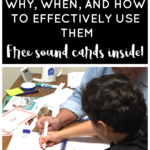
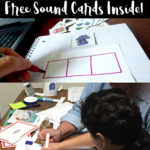
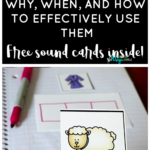
Leave a Reply